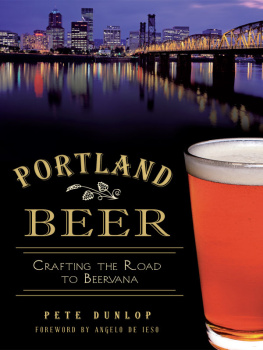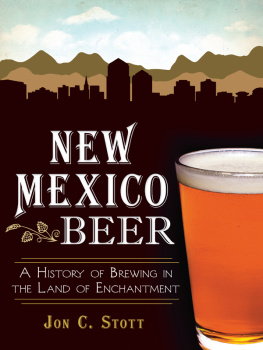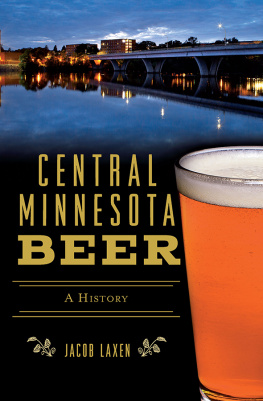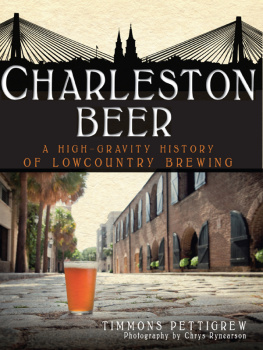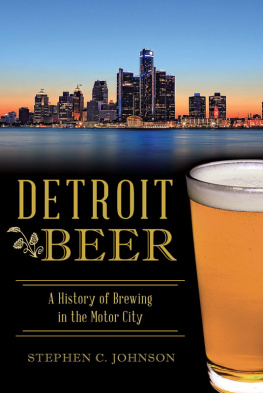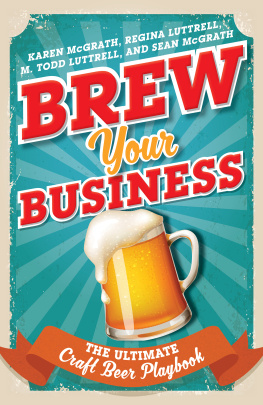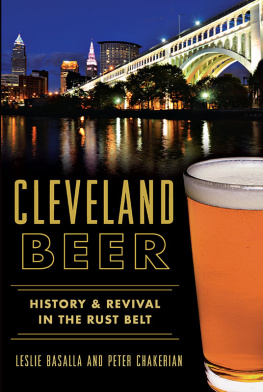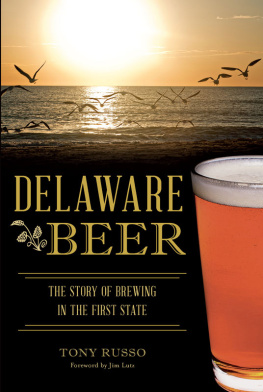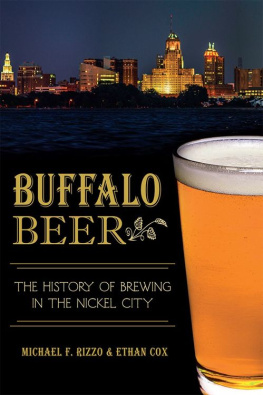
Published by American Palate
A Division of The History Press
Charleston, SC 29403
www.historypress.net
Copyright 2013 by Pete Dunlop
All rights reserved
Front cover photo by Brent Bradley, Oregon Scenics.
First published 2013
e-book edition 2013
ISBN 978.1.61423.949.9
Library of Congress Cataloging-in-Publication Data
Dunlop, Pete.
Portland beer : crafting the road to Beervana / Pete Dunlop.
pages cm
Includes bibliographical references and author index.
print edition ISBN 978-1-60949-881-8 (paperback)
1. Beer--Oregon--Portland--History. 2. Brewing industry--Oregon--Portland--History. 3. Microbreweries--Oregon--Portland--History. 4. Portland (Or.)--Social life and customs. I. Title.
TP577.D865 2013
663.420979549--dc23
2013035211
Notice: The information in this book is true and complete to the best of our knowledge. It is offered without guarantee on the part of the author or The History Press. The author and The History Press disclaim all liability in connection with the use of this book.
All rights reserved. No part of this book may be reproduced or transmitted in any form whatsoever without prior written permission from the publisher except in the case of brief quotations embodied in critical articles and reviews.
For the founding craft brewers and their assorted allies.
CONTENTS
FOREWORD
Its hard to explain the culture of craft beer in Portland to someone who has never experienced it. With a rich history dating back to the nineteenth century, when Henry Saxer and Henry Weinhard begat German artisan brewing influence to the Willamette Valley, beer has always played an important role in the lives of Portlanders. Over the past 160 years or more, beers significance here has, as it has in many regions, withstood many obstaclesProhibition, world wars, economic depression and recession. None of these events has been able to knock the wind from the sails of enthusiasts pursuit of their chosen malted beverage. In fact, it appears that these trials have served mostly to ignite an even more powerful enchantment for great beer.
While other regions and cities have deeply ingrained histories of beer making, the proliferation of dynamic styles that we are witnessing in Portland is astounding. Looking around this unique area, one might question why good beer carries so much significance here. Is it the extraordinarily soft water available from the Bull Run watershed? Is it the abundance of regionally available hops that thrive in the Willamette Valley and the Yakima Valley to the north? Is there something culturally instilled in the collective identity in the Rose City? Inquiring minds want to know.
Since the 1860s, Portland has maintained a bustling pub culture that still manifests itself today. Some credit our passion for a rich tipple to the gray and gloomy months filled with seemingly never-ending precipitation. Whatever it is, the change in seasons provides a suitable canvas for involving ourselves in a vast and ongoing spectrum of beer styles, even those that are conducive to the hot, dry summers that many outsiders dont realize we experience each year. When it comes to beer, anyone who is honest understands Portlands well-deserved position at the forefront of all things related to the culture of the product. Portland is home to more breweries within its city limits than any other settlement in the world. Data gathered by the Oregon Brewers Guild shows that the state of Oregon ranks in the nations top three in number of breweries, breweries per capita, craft beer production, craft beer consumption and percentage of draft beer consumed.
And its not just raw statistics like brewery count that bolster our city as the best; it is also the passion and interest that follow suit. Look around at just about any pub in Portland. From dive bar to diner pub, virtually all of Portlands watering holes offer at least a few craft beer options for those who pursue more than a multinational, adjunct-riddled industrial lager.
Today, breweries in Portland are unabashedly knocking down conventional barriers and carving out discerning niches in flavor and style. The possibilities seem endless, and the future seems blindingly bright. Craft beer is a fixture in Portland, whereas in other regions it represents a smaller segment of those inevitably lured by more esoteric tastes. Here, beer appears to be a part of our genetic code. It is a binding cultural component of our collective identity, as well as an important pillar of our economy. Our citys need to embrace progressive, artistic and forward-thinking ideals shows itself in our propensity to choose locally sourced, sustainable, good-tasting products. Do we drink more great beer because it is available, or do we produce more great beer because it is what we elect to consume? These pages will discuss and answer some of these questions. Of course, you are cordially invited to experience Portland firsthand and formulate answers of your own.
Cheers!
ANGELO DE IESO
Founder, Brewpublic.com

Photo by Damian DeBuiser.
PREFACE
I am a firm believer in the people. If given the truth, they can be depended upon to meet any national crisis. The great point is to bring them the real factsand beer.
Abraham Lincoln
The idea for this book first occurred to me several years ago, while we were in the midst of a significant expansion in the number of craft brewers here in Portland. There were about forty-five breweries at the time, if memory serves, more than any city in the world. I figured it would be worthwhile to investigate how and why craft beer became such a big deal here. Of course, few of us knew what was to come. New breweries continued to open. Today, there are more than fifty operating breweries in Portland, with a dozen more on the fringe of the city. And there are more on the way. There are many worthy beer histories from cities with great craft beer cultures and a surplus of breweries, but Portlands is one that must be told.
For the record, I first became aware of craft beer in the mid-1980s, while I was a graduate student at Washington State University. There were very few craft breweries in those days and none anywhere near Pullman. But one or two of the better watering holes had jumped on the craft beer bandwagon. A tennis buddy of mine had been playing tournaments around the Northwest and apparently discovered craft beers on his travels. One day, after playing a few sets, we visited a local watering hole, and he introduced me to Hales Ale. I didnt love it, but I instantly realized that it was different than anything I had experienced growing up in rural eastern Washington.
Like the rest of my generation, I grew up in an era dominated by light lagers. My dad had permissive attitudes when it came to beer, so I grew up tasting lots of beers. There wasnt much to taste in industrial lagers that relied on the color of the can and advertising slogans to attract fans. Coors was the gold standard for us, and it was available across the river from my boyhood hometown of Clarkston, Washington. Many preferred Coors for its premium identityor Miller for the clear bottleor Budweiser for the red, white and blue labeling. Northwest beers Olympia, Rainier and Lucky Lager were cheap and readily available, and people often settled for them in place of the national brands. People argued a lot over which beers were the best. But the differences were nearly nil. These were the virtual dark ages of beer.
Next page
